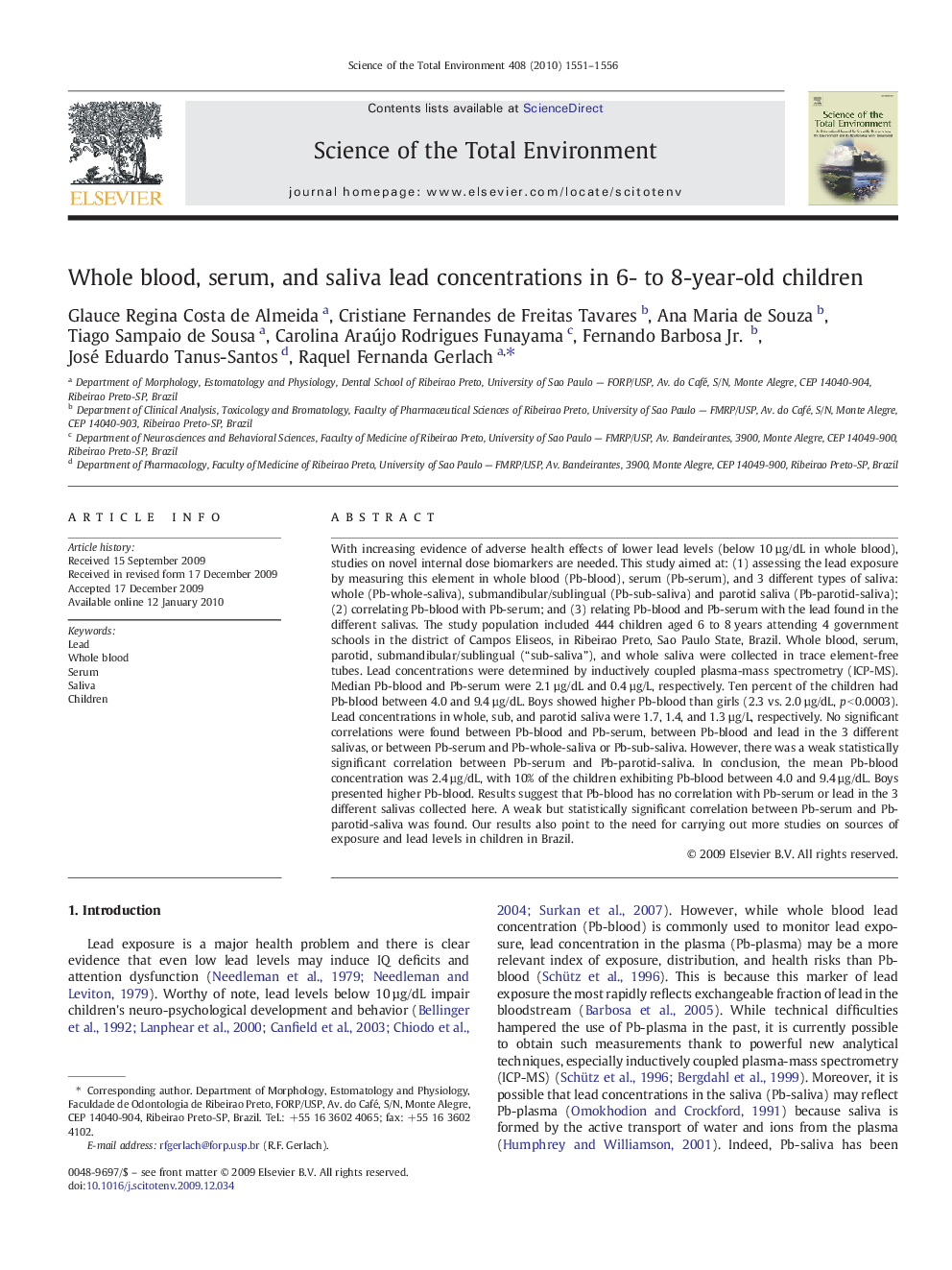| Article ID | Journal | Published Year | Pages | File Type |
|---|---|---|---|---|
| 4432058 | Science of The Total Environment | 2010 | 6 Pages |
With increasing evidence of adverse health effects of lower lead levels (below 10 µg/dL in whole blood), studies on novel internal dose biomarkers are needed. This study aimed at: (1) assessing the lead exposure by measuring this element in whole blood (Pb-blood), serum (Pb-serum), and 3 different types of saliva: whole (Pb-whole-saliva), submandibular/sublingual (Pb-sub-saliva) and parotid saliva (Pb-parotid-saliva); (2) correlating Pb-blood with Pb-serum; and (3) relating Pb-blood and Pb-serum with the lead found in the different salivas. The study population included 444 children aged 6 to 8 years attending 4 government schools in the district of Campos Eliseos, in Ribeirao Preto, Sao Paulo State, Brazil. Whole blood, serum, parotid, submandibular/sublingual (“sub-saliva”), and whole saliva were collected in trace element-free tubes. Lead concentrations were determined by inductively coupled plasma-mass spectrometry (ICP-MS). Median Pb-blood and Pb-serum were 2.1 µg/dL and 0.4 µg/L, respectively. Ten percent of the children had Pb-blood between 4.0 and 9.4 µg/dL. Boys showed higher Pb-blood than girls (2.3 vs. 2.0 µg/dL, p < 0.0003). Lead concentrations in whole, sub, and parotid saliva were 1.7, 1.4, and 1.3 µg/L, respectively. No significant correlations were found between Pb-blood and Pb-serum, between Pb-blood and lead in the 3 different salivas, or between Pb-serum and Pb-whole-saliva or Pb-sub-saliva. However, there was a weak statistically significant correlation between Pb-serum and Pb-parotid-saliva. In conclusion, the mean Pb-blood concentration was 2.4 µg/dL, with 10% of the children exhibiting Pb-blood between 4.0 and 9.4 µg/dL. Boys presented higher Pb-blood. Results suggest that Pb-blood has no correlation with Pb-serum or lead in the 3 different salivas collected here. A weak but statistically significant correlation between Pb-serum and Pb-parotid-saliva was found. Our results also point to the need for carrying out more studies on sources of exposure and lead levels in children in Brazil.
